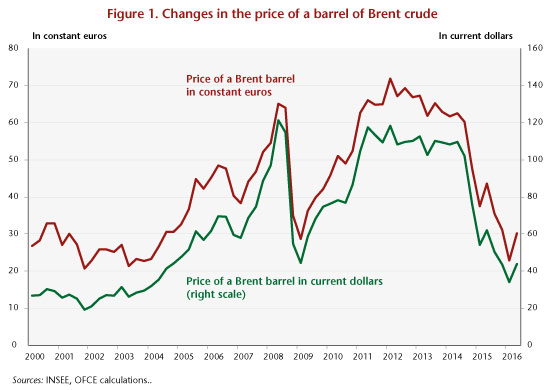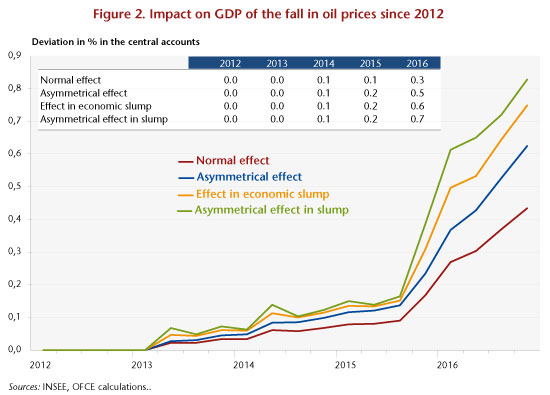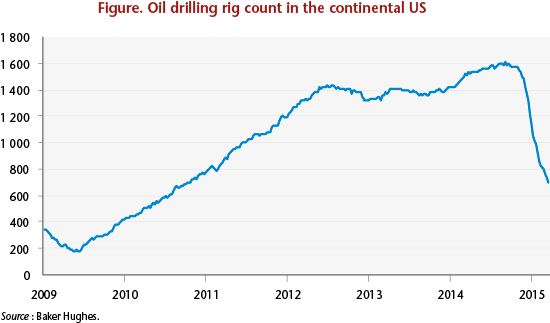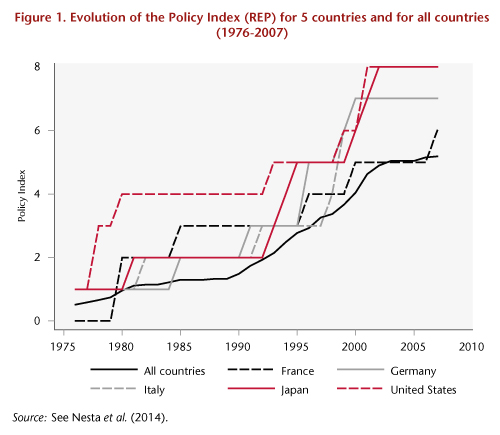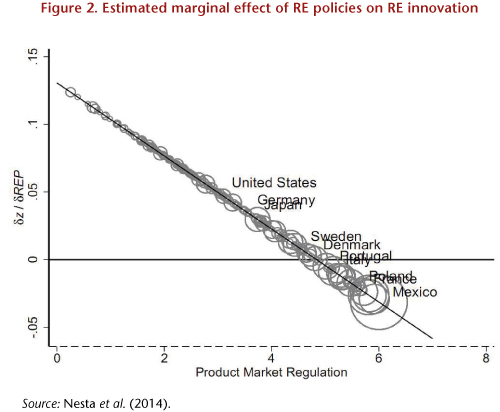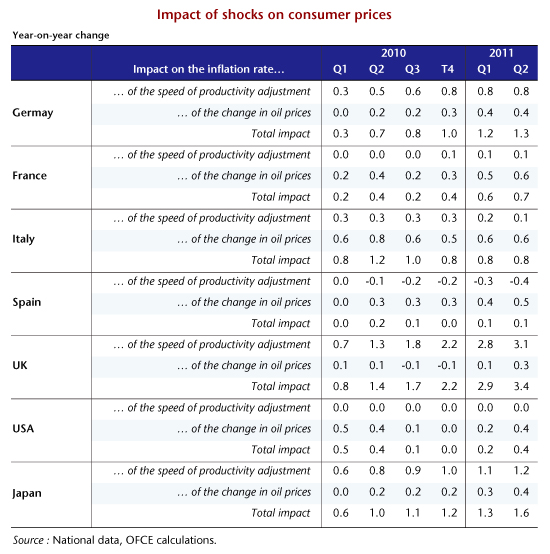By Evens Saliesa
The challenge facing policy-making on the reduction of greenhouse gas emissions is not just environmental. It is also necessary to stimulate innovation, a factor in economic growth. Measures to improve energy efficiency [1] demand high levels of investment to transform the electricity network into a smart grid. To this end, EU Member States have until 2020 to replace the meters of at least 80% of their customers in the residential and commercial sectors with “smarter” meters. In France, these two sectors account for 99% of the sites connected to the low-voltage grid (< 36 kVA), or about 43% of electricity consumption and nearly 25% of greenhouse gas emissions (without taking into account emissions from the production of the electrical power that supplies these sites).
These new meters have features which, as has been shown by research, lead to lower energy consumption. The remote reading at 10 minute intervals of data on consumption, which is transmitted in real time to a remote display (a computer screen, etc.), immediately shows the savings in electricity, which, with two surveys per year, was previously impossible. High-frequency remote reading also makes it possible to expand the range of vendor contracts to include rates that are better suited to customers’ actual consumption profiles. The “pilot” flying the transmission network can better optimize the balance between demand and a supply system that has fragmented due to the growing number of small independent producers. For distributors [2], remote reading solves the problem of gaining access to meters [3].
These features are supposed to create the conditions for the emergence of a market for demand-side management (DSM) that is complementary to the supply market. This market would give non-traditional suppliers an opportunity to differentiate themselves further by offering services that are tailored to the needs of the DSM customer [4]. This could lead to significant gains in innovation if other companies that specialize in information and communication technology also develop software applications that are adapted to the use of the smart meters. However, in France, the policy on the roll-out of smart meters does not seem to be facilitating greater competition. Innovation could stop at the meter due to a decision by the French Regulatory Commission (CRE) which states that:
“The features of advanced metering systems must strictly meet the missions of the electricity [distributors] … Thus the additional features requested by some stakeholders [essentially suppliers] which are subject to competition (basically remote displays) are not accepted.”
A reading of this paragraph would seem to indicate that the suppliers are not willing to bear the cost of developing these features. However, according to Article 4 of this decision, which specifies the list of features for distributors, none of them seems to have been left exclusively to the competitive sector. In practice, households with a computer can check their consumption data without going through their provider or a third party.
It is worth considering the costs and benefits of such an approach, which a priori would seem to amount to the monopolization of the DSM market by the distributors.
This approach will make it possible to quickly reach the goal of 80%, since the CRE has opted for a public DSM service: the distributors, who have public service obligations, will roll out the smart meters. The “Linky” meter alone, from the dominant electricity distributor, the ERDF, will be installed on 35 million low-voltage sites, covering 95% of the national distribution network [5]. There is thus little risk of under-investment in the demand-response capacity that electricity suppliers will soon have. In fact, as the suppliers do not have to bear the costs of the manufacture and deployment of the meters, they can quickly invest in the development of these capabilities. In addition, the equalization of subcontracting costs for the manufacturing of the meters and their installation throughout the French distribution network will make for considerable economies of scale. Finally, the low rate of penetration of meters in countries that have opted for a decentralized approach (the cost of the meter and services are then borne partly by the households concerned) argues in favour of the French model. This model is more practical since it removes most of the barriers to adoption.
Despite this, the degree of concentration in the business of the distribution and supply of electricity to households raises questions: ERDF is affiliated with EDF and has a virtual monopoly on the supply of electricity to households. In terms of innovations in DSM services, it would seem that EDF has little reason to go beyond its subsidiary’s Linky project – first, because of the costs already incurred by the Group (at least five billion euros), and second, because the quality of the default basic information mechanism in Linky will be sufficient to lead to a cost for migrating to DSM services offered by competitors. [6] Alternative suppliers will of course be able to introduce innovative tariffs. But so will EDF. One way to overcome this problem would be to set up a Linky platform so that other companies’ applications could interact with its operating system. With the agreement of the household and possibly a charge for access to the data, the business would of course be regulated, but entry would be free. This would stimulate innovation in DSM services, but would not increase competition since these companies would not be electricity suppliers. Would the consumer have a lot to lose? This would obviously depend on the amount of the reduction in their bills. Given that the price of electricity is likely to rise by 30% by 2017 (including inflation), we are worried that consumers’ efforts to optimize their consumption will not be rewarded. The net gain in the medium term could be negative.
Finally, we can ask ourselves whether with Linky the EDF group is not trying to reinforce its position as the dominant company in the supply of electricity, a position that has grown weaker since the introduction of competition. With DSM service installed by default on 95% of the country’s low-voltage sites, Linky will become an element in the network infrastructure that all DSM service providers will have to use. From the point of view of the rules on competition, one must then ask whether ERDF and its partners have properly communicated information about the Linky operating system, without any favouritism being shown to the EDF Group and its subsidiaries (Edelia, NetSeenergy). The story tellers would like to tell us a beautiful tale about encouraging innovation in energy and the digital economy in order to deal with the ecological transition. Knowing that the current CEO of the company in charge of the architecture of the Linky information system, Atos, was Minister of the Economy and Finance just prior to the launch of the Linky project in 2007, there seems to be room for doubt ….
[1] “Energy efficiency improvement” and “energy savings” are used interchangeably in this post. For precise definitions, see Article 2 of Directive 2012/27/EU of the European Parliament and of the Council.
[2] The distributors manage low and medium-voltage lines. ERDF has the largest network. The networks and meters are licensed equipment, which are the property of the local public authorities.
[3] This would nevertheless involve, for example for ERDF, the elimination of 5000 jobs (compared with 5900 retirements, see Senate Report no. 667, 2012, Vol. II, p. 294).
[4] In accordance with the NOME law of 2010, suppliers and other operators must be able to make ad hoc reductions in the consumption of electricity for certain customers (temporarily cut the supply to an electric boiler, etc.), which is called demand-response load-shedding.
[5] In areas where the ERDF is not a supplier, other experiments exist, such as that of the distributor SRD in Vienna, which has installed its smart meter, i-Ouate, on 130,000 sites.
[6] See the document by the DGEC, 2013, the Working group on smart electricity meters (GTCEC) – Coordination document, February [in French].
———-
The author would like to thank C. Blot, K. Chakir, S. Levasseur, L. Nesta, F. Saraceno, and especially O. Brie, M.-K. Codognet and M. Deschamps. The opinions expressed in this post are those of the author alone.
